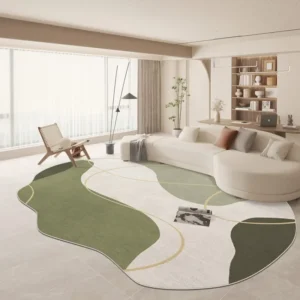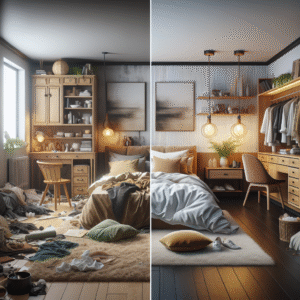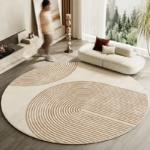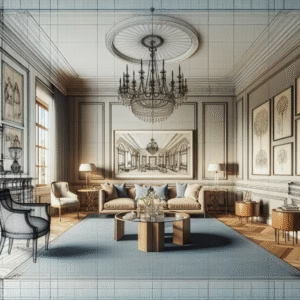Revive Your Wood: Effective Tips for Fixing Scratches on Hardwood Furniture
Hardwood furniture adds a touch of elegance to any home, but even the most beautiful pieces can suffer from unsightly scratches. Whether it’s an accidental nick from a pet or wear and tear over time, scratches in wood can be frustrating. Fortunately, with the right techniques, you can effectively fix these scratches and bring your furniture back to life. In this article, you will learn tried-and-true methods for repairing scratches on hardwood furniture. We’ll explore tools, techniques, and insider tips that you can easily implement at home.
By the end of this article, you’ll have the knowledge and confidence to tackle the scratches on your hardwood furniture, ensuring your pieces look their best for years to come.
### Roadmap of the Article
- Identifying the Type of Scratch
- Essential Tools and Materials
- Step-by-Step Scratch Repair Methods
- Preventing Future Scratches
- FAQs about Scratch Repair
Identifying the Type of Scratch
Before diving into repair techniques, it’s essential to understand the type of scratches you’re dealing with. Scratches can range from superficial to deep, and the method of repair will vary depending on the severity.
Superficial Scratches
Superficial scratches are often light markings that affect only the finish of the wood without penetrating deeply into the wood grain. These are generally the easiest to fix.
Deep Scratches
Deep scratches penetrate the wood surface and may expose the raw wood underneath. These require more intensive repair methods, often involving fill materials.
Essential Tools and Materials
Having the right tools and materials is crucial for effectively fixing scratches on hardwood furniture.
Must-Have Tools
- Soft cloths
- Fine-grit sandpaper (240-320 grit)
- Wood filler or crayon
- Wood stain (matching your furniture)
- Clear finish or sealant
Recommended Materials
In addition to tools, you’ll want to have the following materials on hand:
- Furniture polish
- Olive oil or beeswax for prevention
- A vacuum or soft brush for cleaning
Step-by-Step Scratch Repair Methods
Now that we’ve covered identification and tools, let’s dive into the actual repair methods.
1. Fixing Superficial Scratches
- Clean the scratched area with a soft cloth to remove dust and debris.
- Apply a small amount of furniture polish to the scratch and rub gently with a cloth.
- Buff the area until the scratch is less visible.
2. Repairing Deep Scratches
- Clean the scratch thoroughly.
- Using fine-grit sandpaper, gently sand the area around the scratch to smooth it out.
- Apply wood filler to fill the scratch, allowing it to dry according to the manufacturer’s instructions.
- Once dried, sand it flush with the wood surface.
- Apply matching wood stain to blend the area.
- Finish with a clear sealant to protect the repair.
Preventing Future Scratches
After successfully repairing your hardwood furniture, it’s crucial to take steps to prevent future scratches.
Protective Measures
- Use coasters under glasses and plates to avoid rings and scratches.
- Place soft felt pads under heavy furniture or decor items.
- Avoid dragging items across the surface; always pick them up.
- Regularly clean and maintain your finishes to keep the wood well-protected.
FAQs About Scratch Repair
How can I tell if a scratch is superficial or deep?
If the scratch affects only the finish without exposing raw wood, it’s superficial. Conversely, if the scratch is brown or white and shows raw wood, it’s deep.
Can I use regular paint to cover wood scratches?
Using wood stain that matches your furniture is crucial. Regular paint can mismatch and may stand out against the wood grain.
How often should I maintain my hardwood furniture?
A regular maintenance schedule, typically every 6-12 months, helps prolong the life of your furniture and keep it looking its best.
Are there any preventive sprays for scratches?
Yes! Look for protective sprays specifically designed for hardwood surfaces to add an extra layer of protection.
What’s the best way to clean hardwood furniture?
Use a damp cloth and a cleaner specifically designed for hardwood. Avoid excessive water and harsh chemicals.
Conclusion & Next Steps
Repairing scratches on hardwood furniture may seem daunting, but with the right tools and methods, it becomes a manageable task. By understanding the type of scratches and applying the techniques outlined in this article, you can effectively revive your wood pieces and maintain their beauty for years to come.
Now, it’s time to take action! Gather your materials, assess your furniture, and start repairing those scratches today. For more tips on home maintenance and furniture care, don’t forget to check out our related articles.
Content Disclaimer
This content is for educational purposes only. Always consult a professional when undertaking major repairs or restorations.
Categories
- Accent Walls & Ceilings (14)
- Art Curation & Gallery (29)
- Bedding Style Trends (42)
- Bedroom Makeover (34)
- Bohemian & Eclectic Styles (14)
- DIY & Budget-Friendly Decor (13)
- Eco-Friendly Design (15)
- Furniture Care (33)
- Home Decor & Design Ideas (103)
- Home Wellness Spaces (14)
- Integrated Outdoor Living (13)
- Kids and Nursery Decor (14)
- Living Room Decor (34)
- Minimalist & Japandi Style (17)
- Mix & Match Techniques (33)
- Modern & Contemporary Design (13)
- Rug Sizing & Placement (33)
- Seasonal Home Decor (36)
- Small Space Solutions (18)
- Wall Art & Painting Tips (36)
Recent Posts
Recent Comments
Archives
Product Gallery
-
 Large Area Green Rugs for Bedroom Nordic Living Room Decoration Shaped Carpet Irregular Plush Lounge Rug Home Thick Washable Mat Rated 5.00 out of 5$57.07 – $359.83Price range: $57.07 through $359.83
Large Area Green Rugs for Bedroom Nordic Living Room Decoration Shaped Carpet Irregular Plush Lounge Rug Home Thick Washable Mat Rated 5.00 out of 5$57.07 – $359.83Price range: $57.07 through $359.83 -
 Nordic Style Rugs for Bedroom Morandi Living Room Decoration Carpet Large Area Geometry Lounge Rug Home Cloakroom Non-slip Mat Rated 5.00 out of 5$40.98 – $620.81Price range: $40.98 through $620.81
Nordic Style Rugs for Bedroom Morandi Living Room Decoration Carpet Large Area Geometry Lounge Rug Home Cloakroom Non-slip Mat Rated 5.00 out of 5$40.98 – $620.81Price range: $40.98 through $620.81 -
 Irregular Shapes Living Room Decoration Carpet Modern Style Rugs for Bedroom Home Thicken Plush Rug Fluffy Soft Lounge Floor Mat Rated 4.75 out of 5$58.00 – $360.83Price range: $58.00 through $360.83
Irregular Shapes Living Room Decoration Carpet Modern Style Rugs for Bedroom Home Thicken Plush Rug Fluffy Soft Lounge Floor Mat Rated 4.75 out of 5$58.00 – $360.83Price range: $58.00 through $360.83





























